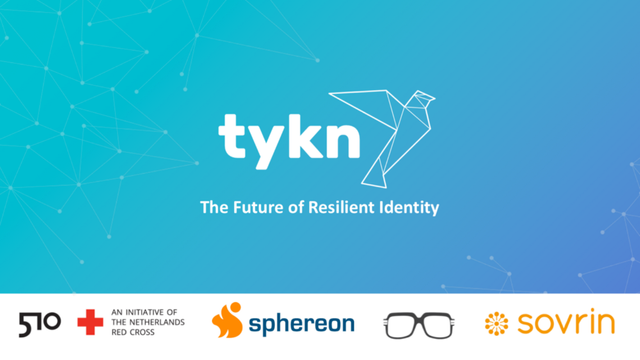TYKN - The innovative idea behind the Project ZINC

Project ZINC is an initiative of the TYKN network. The name of the project “ZINC” is an abbreviation of Project Zero Invisible Children (ZINC) and the goal of this project is still geared towards providing identity management mechanisms to its beneficiaries. Project ZINC aims to formally accredit the identity of children caught up in zones where war-wrecked areas, by taking advantage of the blockchain technology.

Tey El-Rjula who is a co-founder and CEO of TYKN is the man with the vision and on a mission to rescue lives, to give meaning and purpose to humanity especially children through the execution of this project. Through his experience as a Syrian refugee that ended up in the Netherlands, Tey lived been haunted by this invincible nature of a “lost identity”. Today Tey is building what he has declared as “the future of a resilient identity” - to create a world of visible children, giving visibility to the invincible children around the world. In other words, he will through the TYKN network be giving identity to children with “lost identities”.

During an interview held by a prominent organization with Tey about his blockchain network (TYKN) and his progress on Project ZINC. According to Tey, they are working hand-in-hand with the Ministry of Justice and interior in Netherland, along with the country's Red Cross 510 project to utilize more grounds in terms of using information to ensure that they achieve an effective humanitarian aid and at less cost.

Red Cross 510 Initiative
Red Cross 510 initiative is a humanitarian tech and data-oriented startup brought by Red Cross, Netherlands. The aim of this setup is to have a positive global impact; this is achieved by offering current data solutions to ensure that charity aid is cost effective and faster in their execution. This is the same service they will be provided with the ZINC project.

Both projects (TYKN and Red Cross 510) are exploring the ability of the blockchain system to improve that process of offering assistance in form of cash through the utilization of digital wallets that can swiftly distribute cash to the needy. The process is being executed in the Caribbean, precisely Saint Martin. According to Tey, this project was born after the hurricane Irma and the need for assistance. Under the support and assistance of the Dutch Government that is funding the objective to provide aid to the victims, their concern is to ensure that the fund been provided by them (government) is being used for the victims, not the other way round. Tey and his team has built a mobile App (ANA) that will register these children and their data will never be misplaced as a result of occurring errors both tech and human-related, because this information gathered will be properly kept . The purpose for the 510 initiative is to restructure the future of philanthropic activity by changing information into understanding, and allowing these data to rest in the hands of the philanthropists, government bodies and the victims, so that they can be oriented and prepared for further crises and disaster.
BL1.png
In February 2018, Tey with the company of his team members paid a visit to a Syrian refugee camp sited in Lebanon, where they observed that quite a number of individuals in the camp had smartphones, Tey realized that he can leverage on this opportunity and provide the help the people deserved. As Tey explained, that it is quite difficult to confirm identities due to the stress and resources attached which is why they have collaborated with trusted partners like the Red Cross 510 and of course the Dutch Government to conduct the identification process with the confirmed refugees and register them on the blockchain. The information stored on the blockchain can then be assessed through the mobile app at any point in time.

The identity management system will be built on the Ethereum blockchain and will make use of both private and public keys on mobile phones through the application. The ANA has been built to work online and offline as a result of the cryptography signatures making use of the Need-For-Speed tags along with a private key provided in your phone. Currently, the ZINC project came through triumphantly in the Spindle Innovation Awards that rewards the best innovations. The registered identities on the ANA mobile application are completely owned by the individual and operates on a decentralized system, that makes sure that the data of these individuals are safe and cannot be hacked and tampered with. With the user deciding whether or not they will give out a level of their information out to another party. The information of the ANA mobile application can also be updated at any point in time by the individuals.
The TYKN network is utilizing the blockchain technology to help create resilient identities that can never be tampered with while ensuring that they are distributed on a decentralized system.
Congratulations @meemee! You have completed the following achievement on the Steem blockchain and have been rewarded with new badge(s) :
Click here to view your Board of Honor
If you no longer want to receive notifications, reply to this comment with the word
STOPTo support your work, I also upvoted your post!
Do not miss the last post from @steemitboard: